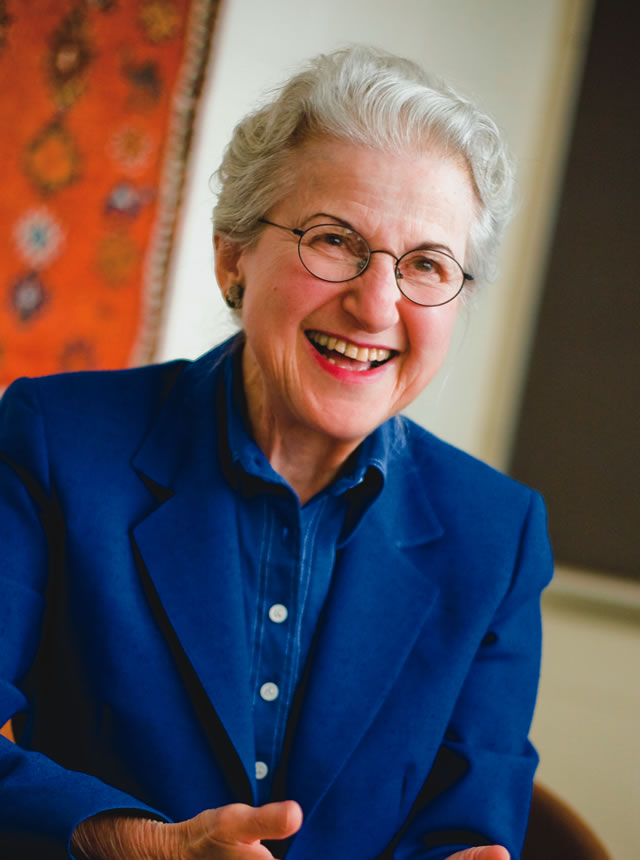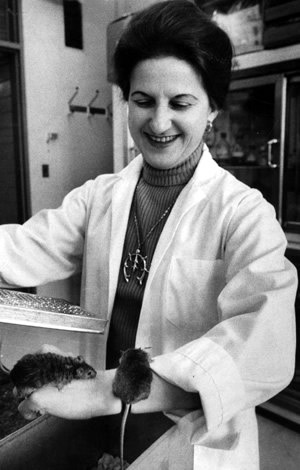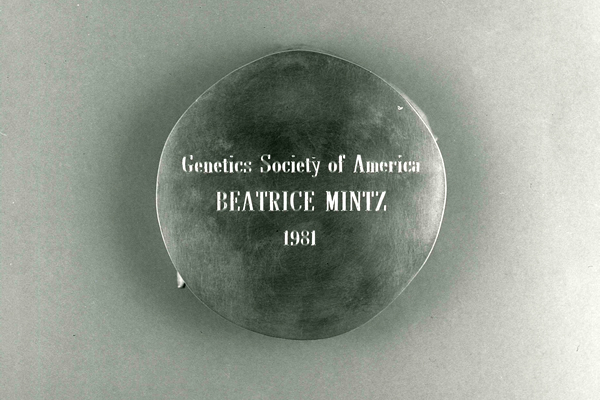
The Iconoclast and Her ‘Big Questions’
-
>
George Beschen
Originally published in Fox Chase Forward, Fall 2009FOX CHASE’S BEATRICE MINTZ has been at the forefront of developmental genetics for nearly 50 years. Her groundbreaking contributions to science include the recognition of the central role of stem cells in cell development and cancer, as well as the introduction of techniques that allow scientists to transfer genes from one species to another. Mintz characterizes her career as pursuing “a series of big questions” that she has had “a good time” answering. Here, she considers (smaller) questions posed by Forward.
Q You have said your experiments always begin with a big question. What was the first of these questions?
A I was still a graduate student at the University of Iowa when I asked myself the question that would still be central to my research when I came to Fox Chase in 1960: “How can a complex individual arise out of a small number of cells in an embryo, and how do the cells become so widely diversified and specialized?” The question had been asked for decades, but it was still being approached with classical methods, such as adding dye to “mark” a cell and track its path. I thought the only really relevant marker for tracing how cells diversified was the gene.Q How did you go about answering this fundamental question?
A I first made composite mouse embryos by essentially gluing together early-embryo cells from genetically different mouse strains. I found that they still developed into single, normal-sized mice. These animals, which contained multiple, genetically identifiable populations of cells, became known as “chimeric” mice. The experiments showed that complexity originates from only a few developmentally flexible “stem cells,” which can divide and also give rise to a branching hierarchy of more specialized stem cells. Recognizing that these cells could generate a complete organism not only told us a lot about development but also pointed to the possibility of using such cells to replace defective cells in humans.Q How unusual was this research at the time?
A This was the first successful work of its kind. Very few labs at the time were attempting to perform experiments on mammalian embryos. That required new technology. I came from a do-it-yourself family—you didn’t buy things that you could make—and I enjoyed the fact that I had to work out everything myself.Q Your later work challenged the assumption among scientists that malignant cells are irreversibly abnormal, opening the door to a new generation of research in this area. How did you reach this insight?
A That experiment grew out of my next question: “Is cancer basically an aberration of development in which stem cells often opt for multiplying rather than differentiating?” I created a chimeric mouse out of normal embryo cells combined with stem cells of a tumor called a teratocarcinoma, which contained many different kinds of tissues. I surmised that there must be a stem cell in the tumor that had once had much in common with the stem cells of a normal embryo. Normal, tumor-free mice resulted, with both genetic cell strains present in all tissues. The experiment showed that the tumor stem cells could be converted to normalcy in a normal environment. This discovery has inspired many scientists to investigate the role of the “microenvironment” in tumor stem cell behavior. The work has exciting implications for the design of cancer therapies."NEW QUESTIONS, and experimental ways to try and answer them, continue to fascinate me."

Professor Mintz in the lab. Q How did this research lead you to develop transgenic technologies that allow scientists to introduce into mice—or other species—genes they want to study?
A Since I knew that both normal embryo stem cells and stem cells of some tumors could contribute to normal development, I wondered whether they could also be used as vehicles to transfer specific genes into a mouse for study. We showed that this could be done. Later, at the same time as labs at three other institutions, we found a more direct approach for getting the DNA of specific genes into a fertilized egg, so that an animal is actually born with the desired gene. Animal models of human diseases could be produced in this way, giving scientists new opportunities for study. The most important mouse model generated in my lab is one with malignant melanoma.Q How has science changed over the course of your career?
A Research funding today is such that you are expected to have a very precise idea of what you want to do; there is inadequate opportunity for exploration. In my view, one of the most important advances is the in - creased appreciation that a gene can express itself in many different ways, even without undergoing mutation. But the things I have always valued most—originality, bravery, thinking outside the box—are still the premium.
Genetics Society of America Award presented to Professor Mintz, 1981 Q What aspect of your career have you found the most rewarding?
A Having the freedom to go from one really tantalizing question to the next, and to recognize and follow clues along the way. New questions, and experimental ways to try and answer them, continue to fascinate me.Q What questions are you focusing on most in your current research?
A One important emphasis in research today is to identify how specific cancers are unique at the molecular level. I feel I can contribute to a different question: whether all cancers are similar in some ways. Uncovering the similarities could help us understand why many cancers return after initially effective therapy. I feel that finding even a partial answer will be the most important work of my life. ❖

